Gems On The Commodore 64 – A To Z
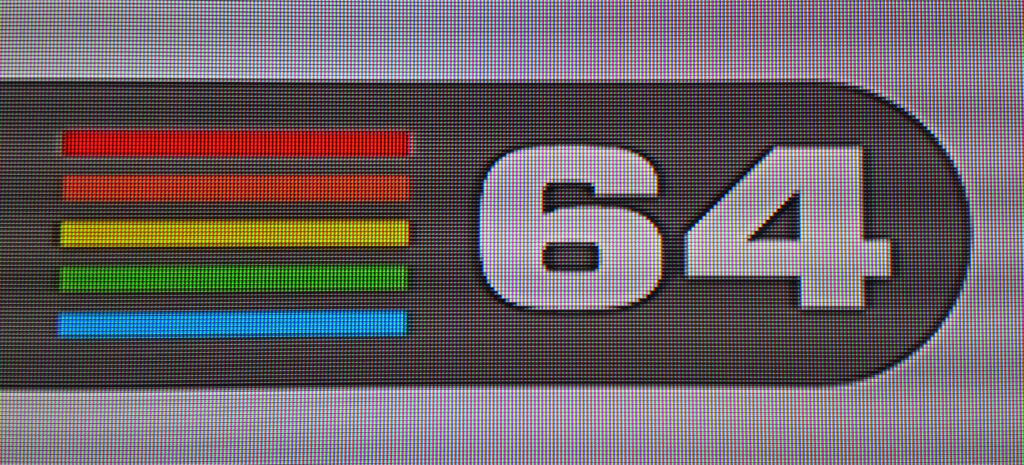
“We are looking at an 8-bit machine, at 0.7 Mhz and 64K of RAM. And we made that thing sing. And dance… Doing stuff that even Commodore, the manufacturers, just… Couldn’t believe.”
/Simon Nicol (From Bedroom To Billions – Video Game Documentary, 2014)
Somewhere around 30.000.
That’s pieces of software in total that exist on the Commodore 64. (Not counting demos, scene related stuff and everything that was unreleased.) All developed and produced since 1982 and up to this very day. Around a third of them were commercial releases. The rest was a very mixed bag. Sure, a huge chunk of them were never published and maybe an even bigger chunk were clones and shameless rip offs of more successful commercial titles. And one can always wonder if we needed 50 variants of Yahtzee, 40+ Battleships-clones, and at least 40 “Hangman”-games. One might also wonder how many of the 1000 (!) text adventures in fact are worth anyone’s time. (We’ve all made one or two of those, haven’t we?!) Or if someone loved Boulder Dash so much that he or she played the official games and all 1000+ (!!) clones of it. Or if we ever were ready for a game called Acid Toilet – Another Shit On The Floor.
The point is – The C64 had it all, and the programmers did it all. There was a sense that anything was possible on this particular micro computer during a surprisingly long time. It was leading the way, the big star in the home computer revolution that changed the world. Because many of the bedroom–games were apparently finished too. And spread. For better or worse. Immortalized.
One can easily draw the conclusion that the Commodore 64’s Golden Era began in mid–1985 (with the advent of the Zzap! 64 magazine), and lasted up to the early winter or spring of 1990. By then, you started noticing more and more how magazines started to praise Amiga–games and conveniently “forget” about the C64, often referring to it as “yesterday’s news” and disregarding its historical impact. In hindsight, we can all agree that the Amiga–games didn’t always deserve said praise.
Another thing that indicated the end of the era was how developers didn’t put the same amount of heart and soul into the C64-versions as the Amiga one. And we started getting less and less exclusives. But at that point, even if the crisis over at Commodore hadn’t begun to tear the company apart (Starting with the relationship with publishers and distributors slowly deteriorating.), the C64 Golden Era lasted slightly longer than the succeeding one on the Amiga. It’s extremely difficult to pinpoint the exact moment in time when the C64 more or less was abandoned by the leading developers, but I think games like the “Creatures”-games, Last Ninja III, Gem’X, Turbo Charge and Rubicon collectively made up one hell of a swan song to bid farewell with.
So around 10.000 titles all in all. In a vast mine like this, not all that glitters is gold. Of course it’s not. But among the commercially released titles, there are still a ton of enjoyable, creative, original and well made games that came and went – Underrated, undervalued and unfairly forgotten. This article is dedicated to some of these gems that in my opinion deserved another chance, or simply titles that more retro-gamers should try out, even if many of them may not be their cup of tea. I still think most of them were better than most media outlets let us believe. Back in the days, you just couldn’t go out there and buy every single game that you wanted to check out. But now, you can. Basically for free. Something that was pure Science Fiction back then eventually became fully possible.
So without further ado, from the aforementioned Golden Era, twenty-seven 8-bit gems that you might have missed. Coin-op conversions excluded. (That’s a topic for a possible future article.) The cut-off period would be that bitter end of the Golden Era. The late 90’s and the games from this millennium would be another story as well.
But now – Back to the 80’s…!
Alternative World Games (Gremlin Graphics Software Ltd., 1987)
Sack Race, Pile Of Plates, Boot Throwing, River Jump, Pole Climbing, Run Up The Wall, Pillow Fight and Pogo Stick are all sport events that we may never see in the Summer Olympics, but then again – These are exactly what the title of the game suggests. One up to six players compete against each other, or the computer, in eight events with some challenging controls to say the least. But it is possible to get the hang on them. A big part of the game’s charm is the Mediterranean-style graphics and Ben Daglish’s cheerful and catchy tunes. And the presentation of course – In games like Summer Games, you type in your name and choose a country. Here, you enter your name and choose a country as well, but then a parrot picks out a vinyl record with your national anthem and puts it on a gramophone. (And it clearly enjoys the music!) There are several touches of silliness and slapstick humor throughout the game, and the animations make it almost as fun to fail as to succeed. At first. A really good game all in all and well worth some of your time.
The Big Deal – Floyd The Droid On Food (Radarsoft, 1986)
After the most disgusting big city sewers were cleaned up in the predecessor (Floyd The Droid) – Where did our droid buddy go from there? To a fast food restaurant, of course! In The Big Deal, Floyd is hurrying and rolling around in a kitchen operating various gadgets in order to serve the waiting customers everything from T.V.-dinners and milkshakes to burgers and fries. You have a couple of options available through a menu where you can see a list of recipes and sets of programs how they’re all done. But you have to keep going at a steady pace, because the customers outside get impatient soon enough. And when they finally get angry, they leave. But not before flinging something hard at Floyd. (The sewers were definitely more forgiving in that regard!) Luckily, it’s possible to self-repair and keep going. This was probably Floyd’s last job as Radarsoft didn’t make further “Floyd”–games. Which is a bit of shame since they showcased some true originality and a recognizable character. The neat and imaginative graphics, great music and fun factor also helped. The Big Deal is also way easier to get into than the first game.
Chamonix Challenge (Infogrames, 1987)
It’s now off to Chamonix-Mont-Blanc in the Alps for some serious mountaineering. From an overview of the mountain, you select your route – Each one more difficult and challenging than the last. There are six in total. And there are other parameters that alter the conditions, e.g. what time of day you set off on your big adventure. But you can’t just take off without filling up your backpack with foods and bringing the equipment required, because up there, most stuff is against you – Temperature, fatigue, height and hunger. It’s a challenge indeed. At the beginning of the trip, you hike towards the more vertical parts of the mountain. But there are cracks (both visible and hidden in the show) along the trail, so you can still fall 2.000+ feet to your instant death at any time. If a real mountaineer would call this a simulator, I have no idea. But it sure demands a lot from the player. You really have to keep an eye on lots of stuff and the climbing itself is a task in itself. But it’s surprisingly fun and there is a sense of victory as you advance.
Double Take (Ocean, 1987)
Denton Designs made at least a dozen original and highly compelling games for the C64 alone, and this is another one from their heydays. Double Take takes place in two worlds – The normal one, and its dark counterpart. It seems that the gravity is gone in both of them, because you can fly freely around the screen as you shoot various aliens. You control a professor who has to restore the balance in both worlds – Piece by piece. And that is done by shifting various objects between the two dimensions. But of course, the wicked aliens are trying to stop you. Time is another threat as it runs out fast enough if you just try to figure out what to do. Double Take is a curiosity in many ways, and you might find yourself drawn to it time after time in case you get a bit further. It’s no masterpiece when it comes to game-play, but it has some interesting qualities that make it memorable. The short main theme is one of them, and it’s strange that it doesn’t get annoying after the tenth time. Almost as strange as the game itself.
Eagles (Hewson Consultants Ltd., 1987)
Had the C64-version of Escape From Colditz been finalized, it would’ve been in this spot… It wasn’t too easy to find a gem for the letter “E”. But Eagles is a gem nevertheless – A fast-scrolling split screen head–to–head Shoot’em-up that has that intangible “just one more try”-element to it. You play against the computer or a human-controlled player two. If you choose the latter, you can also play as a team. As you fly left and right, you have to shoot waves of aliens, pick up small glowing orbs and deliver them to a station. In head-to-head mode, you try to pick up the orbs faster than your opponent. Once you have collected all of them, you automatically wipe out the aliens from the level before you proceed to a bonus stage and subsequently to the next level. It’s all very simple, and you basically know what to do as soon as you start playing. (Especially if you are familiar with Dropzone.) But it’s nowhere easy and just like many similar games, they’re funniest in shorter sessions. Plus it has excellent and unique title-music (56 seconds long!) by Johannes Bjerregaard and superb sound FX.
Floyd The Droid (Radarsoft, 1986)
How about a sewer maintenance game next? (Told ya – The C64 had it all!) The sewers in six major cities need to be cleaned up and repaired. (Finally!) But since it’s quite hard to find someone who is willing to crawl around in sewage all day long, some engineers have constructed Floyd, who is a programmable droid. Floyd is equipped with a laser-beam and a set of procedures that needs to be pre-programmed so that Floyd can eliminate bats, alligators, gigantic rats and other dangers successfully. Every now and then, you run into chunks of sewage that block your path and clog up the sewer. That’s when the laser comes handy. Floyd also has to repair big cracks in the pipes here and there. Furthermore, you can program your route through each sewer to make life a bit easier. The game is designed around an isometric view as you navigate through the levels, but once the procedures are activated, the game switches to a side view. It works. (“Full 3D” just didn’t exist in 1986.) Also check out the intro where the sort of cute Floyd rolls and jumps around in the metropolitan streets.
The Great Escape (Ocean, 1987)
Another Denton Designs game to the list, and I couldn’t help becoming a bit of a fanboy – The Liverpool developer produced one hit after another, and this is yet another intriguing title to their name. You’re a POW in a German camp during WWII where every day is the same – Wake up, roll call, exercise, lunch, more exercise, dinner, lock down and sleep. Of course, with your morale at 100% you immediately start to plan your great escape. If you let go of the joystick “long” enough, your character automatically reverts back to the daily prisoner routines. But the object of the game is to find your way to sweet freedom through – Marching through the main gate is out of the question and the guards will throw your ass into the isolation cell if they catch you doing something you’re not supposed to do. It’s really exciting to sneak around outdoors after dark, trying to avoid being seen by the guards in the watchtowers. Once your morale drops to zero after too many misadventures and escapades, the game is over and you just become an obedient prisoner amongst the rest.
Hot Shot (Addictive Games, 1988)
Sport games that takes place in the future weren’t unusual either on the C64, and only the game developers’ imagination helped keeping them in the future, maybe forever. Because we’re still not competing in this sport that Hot Shot depicts. Two combatants (human, alien or robotic) enter an arena and both are armed with a “gun” that can catch and shoot a flying ball (pretty much like in Bounces). If you get hit by the ball, you dematerialize and lose one turn. Each arena look a bit different and utilize the mechanics from traditional Breakout (with bricks that you must shoot down) and / or Pinball (bumpers that send the ball flying in random directions). The ball itself doesn’t follow any physical laws either, which makes the sport so much more difficult. There are also very pinball–esque bonus levels and the competition takes place over nine levels. And it’s all set with a time limit and a score counter. Addictive Games got it right (with a name like that) – Even if the game is a bit clunky, it too has that “one more try”-quality to it. The unusual genre-combination makes it worth checking out.
Io (Firebird, 1988)
Horizontally (or vertically for that matter) scrolling shooters were very, very commonplace on our beloved machine, and during the creative peak of the industry, there were so many of them Shmups that quite a few gems didn’t get enough recognition. Like Io. (1988 was another golden year for Firebird as they published 18 games that year.) This one really stuck out because of three reasons – Its outstanding arcade-like graphics, its polished and responsive game-play (The coding is a true 8-bit Tour De Force.), and its notorious difficulty. With a trainer, the game takes about ten minutes to complete, so four levels may seem like too little, but, you won’t get through them without sweating, swearing and feeling physical pain (from punching hard, dead objects). Your reactions are really put to test, but you can upgrade your ship with two auxiliary satellites and set off smart bombs by shooting at them as they appear on screen. Each of the levels have their own original boss. (Check out the huge fireball-spitting, laser-shooting skull, for example.) As far as I know, this was the first and last game that Kinetic Designs developed. A damn shame.
Jinks (Rainbow Arts, 1987)
Imagine and variant of Breakout where you can flip the bat (which is triangular so one side is flat) and move it freely around the screen. (As long as there aren’t obstacles in the way.) And what if the screen scrolled sideways as you move, and there were not only destructible bricks but also one–way barriers, more or less lethal objects, power-ups and various gadgets that either help you or screw up your game? That’s Jinks in a nutshell. You start with one life and the game is over if the ball falls through a hole in the floor or if your bat is destroyed. The objective is to navigate the constantly bouncing ball by either hitting it with the bat or trying to change the ball’s direction with it. At the end of the level, there is a teleport to an “Interlude Screen” where you can sort of choose which one of the four levels you want to have a crack at next. Rainbow Arts knew how to construct playable games. Jinks is slightly addictive in that hard-to-explain way. It looks nice and Chris Hülsbeck provided the excellent music that changes key randomly.
Klax (Domark/Tengen, 1990)
Domark/Tengen’s two-year career on the C64 wasn’t exactly what anybody would call “a success story”. (The copyright debacle around Tetris at the time was just another nail in their coffin.) And the games weren’t exactly any technical wonders – Most of them were Coin–op conversions. But Klax stood out on most platforms that it was released on. And it was marketed as the natural development of Tetris, or as a spiritual successor (following all the Tetris-clones that were out at the beginning of the new decade). “It is the nineties, and there is time for… Klax.” And… It is hooking for sure. You have to collect rows of Klaxes at the bottom of the screen as they fall down a conveyor belt. You use a sideways moving platform which you catch the Klaxes with. The platform can hold five Klaxes at the same time and when you tilt it, the top Klax falls down to the area where you have to form the lines. The Klaxes have different colors and each wave makes the game slightly more difficult. I remember the Amiga–version being as playable as the C64 one, so it’s a solid port.
Little Computer People (Activision, 1985)
Way, way before The Sims and a whole decade before Tamagotchi, there was the L.C.P. The idea was that computer users became aware of the L.C.P. thanks to Activision’s program, and that one L.C.P. lived in every computer. So now that you’re here as a scientist, it’s your duty to take care of him and his dog as they settle in. The game is played on a single screen showing your L.C.P.’s house. With keyboard commands and complete sentences, you communicate with the dude and not only do you have to feed him, you have to keep him in a good mood through various activities. Those include things like playing cards, playing music, watching T.V. or exercising. Neglect him long enough, and he becomes sad. Lack of food / water makes the L.C.P. sick, and he can actually die. The program uses eight direct commands (e.g. CTRL+R gives the L.C.P. a new record and CTRL+W fills up the water supply), and there are at least 150 words that the parser understands. Little Computer People definitely was instrumental in creating the whole A.I. that you can get emotionally attached to. And this was in 1985!
Montezuma’s Revenge (Parker Brothers, 1984)
Panama Joe was probably not the first iconic platforming game hero, but he was out early in a game – Not about that notorious traveler’s diarrhea, but about exploring an underground temple full of traps, fire pits, conveyor belts and platforms. And that’s the good news. Add poisonous spiders, huge rolling skulls and snakes to the mix as well. And everything will kill you on impact. The temple is divided into two sections – Left or right. The entire thing consist of somewhere around 100 rooms. You select difficulty level between 1–3 and off you go. There are three different colored doors that open with their respective colored key. The knife makes you invulnerable against the next target you hit. And the torch lights up the dark rooms on the deeper levels. You have five lives and one continue with five additional lives, and they run out fast. Montezuma’s Revenge is one bloody enjoyable game and it will definitely draw you back from time to time, because it is a lot of fun to try to get a bit further. Timing and luck too are needed, as well as pure skill. Check it out.
Nemesis The Warlock (Martech, 1987)
Games based on comics usually don’t usually get known for their excellence, but this one manages to be entertaining and sadistically difficult at the same time. Nemesis, the alien titular character, is hacking and shooting his way through genocidal conqueror Torquemada’s army of the undead. The game takes place on twenty-something static screens and the main feature of the game is that you indirectly build platforms out of the enemies’ corpses since they don’t disappear from the screen (like in most other games). You have to kill a specific number of zombies on each level. Sometimes, a freshly slain baddie gives birth to the Grim Reaper himself. Apart from your trustworthy sword, you have a gun as a weapon. (But not unlimited ammo.) You can also spit a nice fireball every now and then. The health bar is illustrated by a hand that slowly crushes a bleeding heart, and once you have killed enough enemies on one screen, you have to hurry to the exit or die a very quick death. Nemesis The Warlock is really good – It plays well, looks great and has an absolutely stunning and atmospheric eight-minute Rob Hubbard title tune.
Out On The Tiles (Firebird, 1987)
And in this game, you are a cat…! With nine lives, of course. And your mission, apart from survival, is to make the neighborhood your territory and show who’s the king of the alleys. Which in a video game means that everybody and everything is out to kill you. The owls diving from the sky are the most lethal, but there are also frogs, hedgehogs and rats. And Mr. Brown, of course. He doesn’t like you very much either. On each side-scrolling level, you have to collect four fish-bones. And eat mice to keep the energy level up. And since you control a cat, you can jump pretty high to reach the fish-bones that always are placed on some roof or window ledge. A dancing mouse keeps track of your flea count as well. Out On The Tiles is a good looking game, especially the feline protagonist is well animated. The streets have its own atmosphere and the nice tune just adds to it. The controls do feel a bit unusual at first, but once you master them, you can start playing for real instead of dying every five seconds. Surprisingly high replay value too.
Phobia (Imageworks, 1989)
This very ambitious horizontally scrolling Shmup was one of the very last games (if not the last) that legendary game developer Anthony Crowther made for the C64. It’s always more impressive to go out with a bang. And Phobia was exactly that. The game has fifteen levels all based around stuff that many people have a deep and irrational fear for. It starts with the common one, arachnophobia, in order to set the mood properly, which means that the first level has spiders and bugs crawling around the screen plus that the first boss is a huge spider. Other phobias in the subsequent worlds include birds, electricity, water, death and, you’d better believe it, dentists. You travel to the next world after you obliterate both the boss and the core in the subterranean section of the planet. And if you don’t want to face the fears alone, there is a simultaneous two-player mode. The game’s visuals are simply striking – There is a ton of variety, lovely parallax-effects and amazingly imaginative enemies and bosses. The only thing missing is a kick-ass soundtrack during game play. But there are some lovely sound FX instead. A must.
Quedex (Thalamus, 1987)
Stavros Fasoulas’ Quedex is the “Quest For Ultimate Dexterity” and the path to such a goal goes through ten Planes where you have to guide a ball from start to finish. Some of the Planes have a maze-like quality while others are more like an obstacle course. But they are all different from each other and each Plane requires a different approach and a mix of quick reflexes, problem solving and coordination. Plane 1 is the easy one where the game basically shows you how it controls, but once you dive into Plane 2, you’ll notice that you’ll need to rely on your skills and your skills only. The Planes can be played in any order and there is a time limit in all of them (measured in “Units”) and some Planes even have a jump limit. You’ll probably get the hang of the controls quickly enough, but that doesn’t mean that the quest will get easier. For a game on the C64, the graphics are spectacular to say the least – It just looks polished and clean. And there are some lovely tunes by Matt Gray during the intro, title-screen and one of the Planes.
Red L.E.D. (Starlight Software, 1987)
In the future, three ZMX droids are sent out to repair the links between a cosmic interface-grid. The purpose of the mission is to provide Earth with resources and supplies. And this is done by creating a straight line across a map of hexagons. You pick one hexagon out of 37, select one of the droids and teleport to a scrolling isometric landscape. The three ZMXes have different characteristic – While one of them can float above water, another one is destroyed by it. Another one is less affected by inertia than the other two. Et cetra. Once you have collected four energy pyramids, you teleport back to the hexagon-map to select another one. On your journey, you also collect smart bombs and stuff. And there are enemies at your throat at all times, draining your energy. But you can steal it back by vaporizing them with your gun. You have one hour of real-time to complete the link. Initially, I didn’t like the controls at all since the droids easily fall off edges and slide exactly where you don’t want to go. But after 30 min. or so, the game became much more playable.
Sailing (Activision, 1987)
When was the last time you actually went sailing on a computer screen? Well, here is a sailing game, or “The International Yacht Challenge Game” as it’s also called. So are you a “land lubber” or an “old sea dog”? First of all, you design your own boat and there are a couple of options to choose from (like hull material, mast height and the shape of the keel). After reading the forecast for the day’s weather, you set off to race against your opponent. The upper half of the screen shows the sea and the lower half has the radar, speedometer, compass and an indicator that shows from where and how hard the wind blows. With the fire button, you either hoist and stow the spinnaker and you have to move the joystick in either clockwise or counterclockwise circles. Even I who knows exactly jack shit about sailing managed to get the boat moving and, most of the time, respond to directions. On a really stormy day, it’s a delightful sea-sickness simulator too. Sailing is a surprisingly captivating game once you get the hang of it. They really don’t make ’em like this anymore.
Thanatos (Durell Software, 1986)
You control Thanatos the Destroyer, a dragon that gets to burn enemies alive as you fly across the land and sea to rescue a sorceress from a castle. What more could you ask from a video game? On your insanely hazardous journey, you encounter hostile knights, giant spiders, falling rocks and sea serpents. And flying into flocks of birds at 200 kph doesn’t feel good either. You have your vital energy and your “flame”-energy that you have to keep an eye on. As you get injured, your heart beats faster and faster. If it beats too fast, you croak. And when you run out of flame, you have to devour witches that are tied to a stake. (!) Because you need flame to burn down the castle gates. Once you have rescued the sorceress, you have to take her to her cauldron. Meanwhile, you have to protect her at all costs. You can also grab people with your talons and drop them to their death. Thanatos’ Spectrum origin shows at all times, but there were several improvements made for the C64. It’s a strangely enthralling game with tons of charm even if it’s on the slow side.
Uninvited (Mindscape, Inc., 1988)
When you think of windows-based Point ‘n Click-adventures, you usually don’t think of the C64 that had a resolution of 320×240 pixels. But some attempts were made and there were a couple of them, mainly from Lucasfilm and Mindscape. And they worked as intended. Uninvited is a haunted house / supernatural horror adventure that begins with you waking up in a wrecked car. Your little brother is missing and as soon as you get out of the car, it explodes. But “luckily”, there is a mansion nearby… The story is told with text and still images of the surroundings. (Ghosts and other creatures are animated.) From a menu, you select a verb before clicking on objects. There are also windows for your inventory and e.g. if you look inside a closet. The graphics are only in dull 4-5 colors (reminds of 80’s MS DOS-games) and there is barely any sound, but the game has nice atmosphere, plot twists and clever puzzle solving instead. The most amazing thing about Uninvited is that they made this joystick-operated port function properly. Granted, it’s not as convenient as it is when using a mouse, but still… A good job!
Verkeersrally (Radarsoft, 1985)
The Dutch title translates into “Traffic Rally” and is more like a combination of a simplified traffic school and driving game. (And not rally.) The objective is to find nine radio transmitters that are strewn in the city. Meanwhile, you have to drive around and follow actual traffic rules, which means that you can’t drive in the wrong lane, turn on red lights or crash into other drivers. And you have to make sure that you don’t run out of gas. Intermittently, the game play is interrupted by a typical traffic scenario where you have to answer a question. (It’s usually a variant of “Who gets to drive first?”) The wrong answer adds to the time penalty as there is a time limit in the game as well. The driving itself is really nothing to write home about. The car has one speed, turns in 90 degree angles and stops on a dime. But this doesn’t take away the fun from the whole deal. The city map is pretty impressive in size, and Verkeersrally has lots of lovely details, like the accordion-tune during the title screen and the charming “retro futuristic” look of the city.
Whistler’s Brother (Brøderbund, 1984)
You and your brother, a.k.a. the Doctor, are out collecting artifacts. But the Doctor happens to be a bit confused and runs around all over the place like a lunatic. So while you run and climb to get to the goal, you also have to guide your brother there and keep him away from various dangers. This is done by constantly whistling. Usually, the Doctor follows you if you whistle in the exact right spot and right moment, but it seems to work as randomly as the Doctor’s non-stop and crazed rushing. While collecting the artifacts you also need two types of tools that are lying around up here and there – One repairs holes in the platforms and the other one is a “whirlwind of action” that’s used to dodge hazards. Because if the Doctor dies – You die. If you figure out the mechanics on the first level (where the only thing trying to kill you is lightning), you’re off to the next one which is much harder. And the game gets excruciatingly hard and frustrating as hell at times. (If the music doesn’t drive you nuts.) But it’s quite fun too…!
Xenon (Melbourne House, 1989)
Hmm… X… X… Damn… Apart from X–Out, finding a gem that begins with “X” proved to be more or less impossible. I guess Xenomorph is a good one, but… There is always… Xenon. Honestly, I haven’t got that much good to say about this conversion. It looked great on the Amiga when it came out, and I suppose it couldn’t look any better than a poor man’s Hades Nebula on the good ol’ C64. But it plays almost the same as the Amiga-version – It’s a vertically scrolling Shmup where you control a hybrid spaceship / ground vehicle. You can easily switch between the two types and you can upgrade you ship with better weapons and so on… Halfway through each stage, there is a middle boss and after that, you’re in for some more shooting and even more shooting. The graphics look pretty nice, but the attempt to make it look like the original just didn’t work. More than often, the enemy bullets are difficult to see, especially when they come flying for several directions. And the game is just too bloody hard for its own good. Decent, but not a classic, I’d say.
The Young Ones (Orpheus, 1986)
And finding one for “Y” was almost as hard. But as a big fan of the 80’s T.V. show, I had to check out the game based on it. Rik, Mike, Vyvyan and Neil are about to move from 15 Credibility Street, so you pick one character and start going through the house to get your belongings. The other characters are controlled by the computer and you control yours via three commands – Action, Talk and Walk. Via menus, you pick up and use various things. Naturally, it’s not that easy to get all your stuff (or even figure out which ones belong to you). On screen, you see two floors of the house simultaneously and you have to be out of the house before one of the Balowski brothers gets there to collect the rent. I don’t recognize the music, but there are several references to the show, like the “CCCKH radio”, Narnia, Rik giving the two-finger salute, and Vyvyan’s hamster called “Special Patrol Group”. The game is not a masterpiece in any way, but it has a certain presence and charm that rests on the uniqueness of the show. Which is a masterpiece.
Zolyx (Firebird, 1987)
If you look at any screenshots from this game, you might think: “God damn it, the game crashed again!” or “Where exactly is the game, then?” Because it’s a black screen with a narrow blue border. With bouncing white dots. You move a yellow dot in straight lines on the black surface as a line is drawn directly behind you. Once you reach the border or another one of your lines, the enclosed area fills up with blue. Yeah, because it sounds pretty much like a Qix-clone, except… This is faster and funnier. And way more responsive and addictive. (At least compared to the C64-version, which I found very sluggish.) There are differences, though. If you divide the screen with one line, one half won’t fill up with blue. Instead it confines the enemy dots. And you can freely move in your blue areas. Once 75% of the screen is blue, you move on to the next screen… Which looks pretty much the same. Only slightly more difficult. Zolyx is one of those games that are harder to explain than it ever should be. But you know how to play the moment you press Fire.
3D Pool (Firebird, 1989)
It may not look like much, but never judge a virtual pool table by its large pixels and overall blocky look. Because this is an oddly atmospheric game of pool. The “thing” with 3D Pool is that you move the point of view of the table in all three dimensions in order to line up your shots. Once you find that perfect angle, you choose where exactly you want to hit the ball and how hard. Every time it’s your turn, you can freely move around the table to get a better look at the table. (Which is necessary since the game can almost look glitched at times.) There are a couple of different game modes, like a tournament where you meet veteran players like Maltese Joe and Mighty Mike. You can also practice your skills and compete against a human player. The lack of music adds some tension to the game and there are only a few but suitable spot FX. A very inventively designed game, and as surprisingly easy to learn to play as it is fun to play. I’d think that the “3D”-engine at least was a bit ahead of its time.
And there we have it, ladies and gentlemen… That was A through Z (and one of those games with a title that start with a number). Which means that it’s time to round this thing off.
For this “project”, I went through the entire Gamebase 64 title by title to check out which ones to play – Especially those games that I have known about since the 80’s, including those that Zzap! 64 vouched for. Which subsequently lead to me playing way, way more games than those 27 in this list. It was all done during 40–50 hours in total.
Anyway, I hope you find some of these games as much fun as I do. There are so many that have these simple yet endearing qualities that we just don’t see in modern games. I also realized (again!) how much nostalgia is involved in appreciating these pieces of software.
But isn’t that exactly how it should be…?



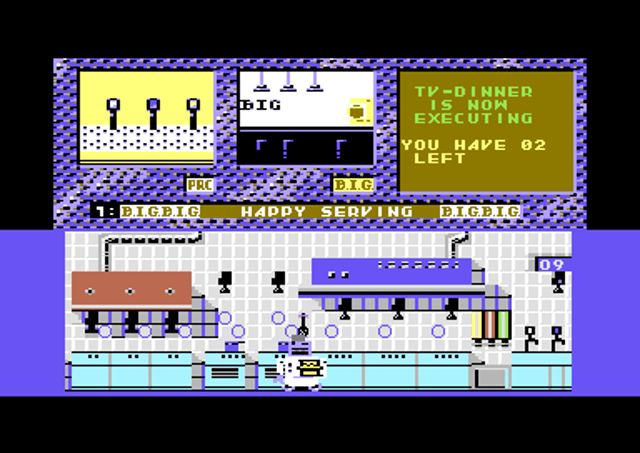
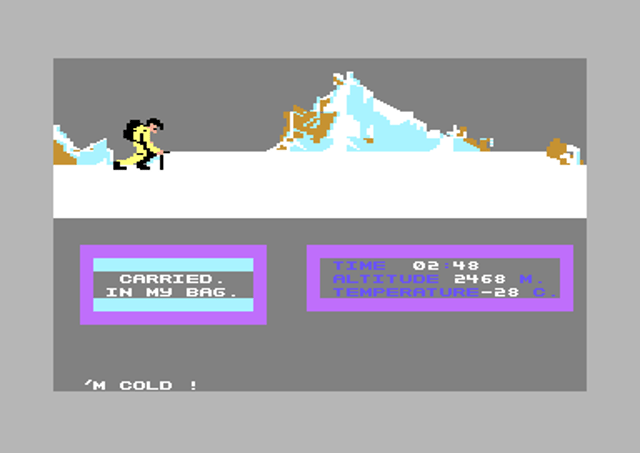
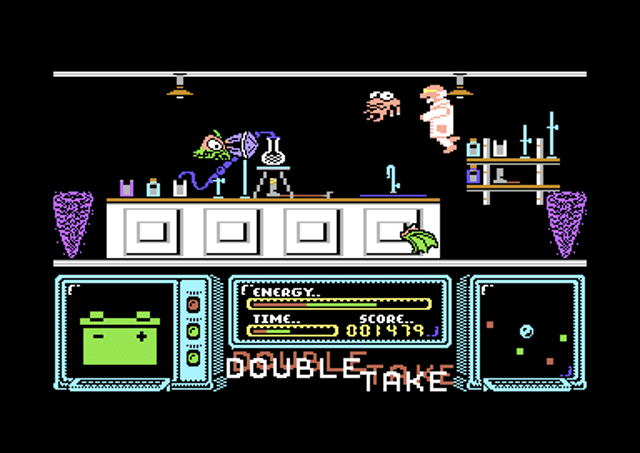
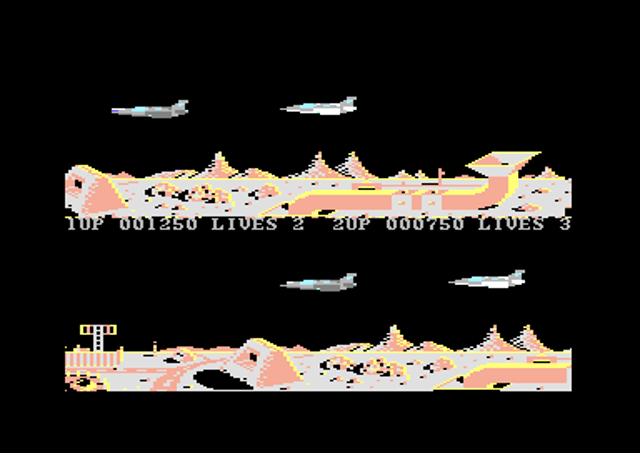
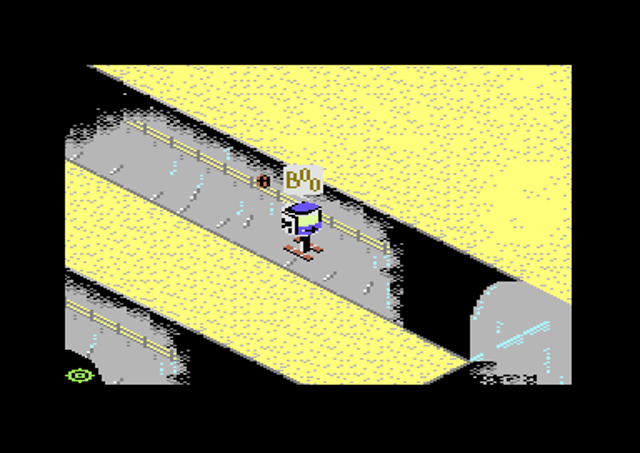
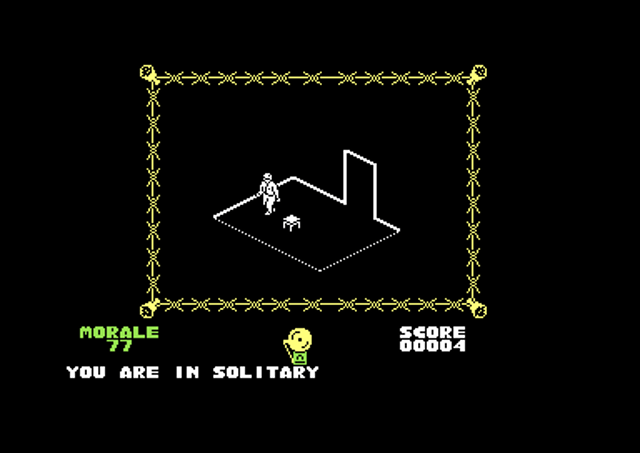
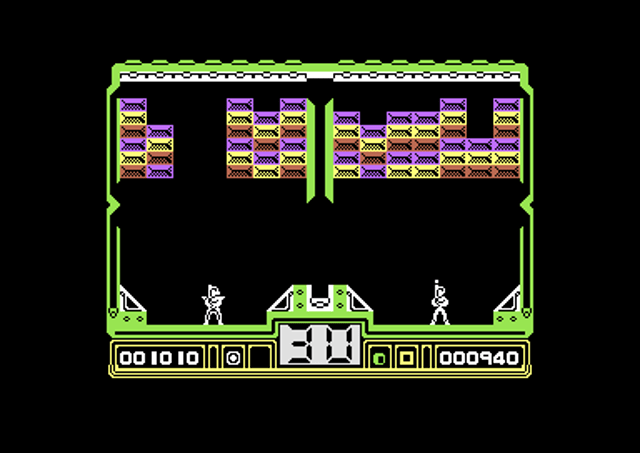
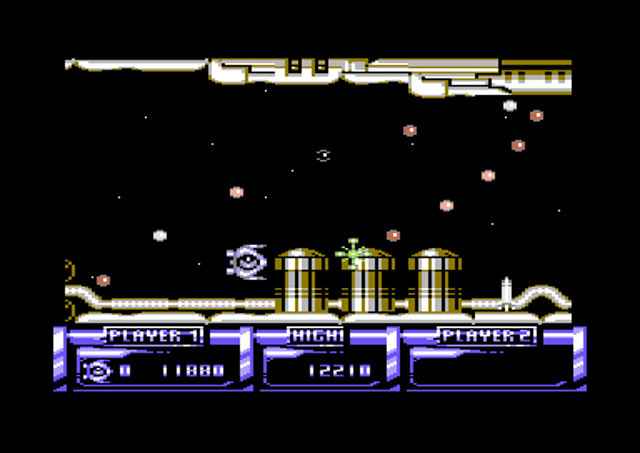
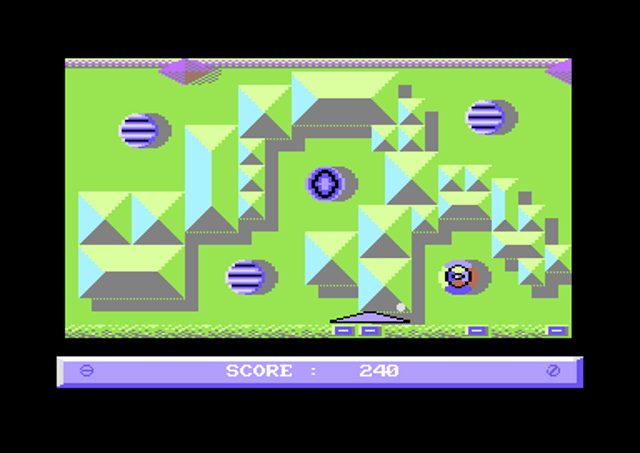
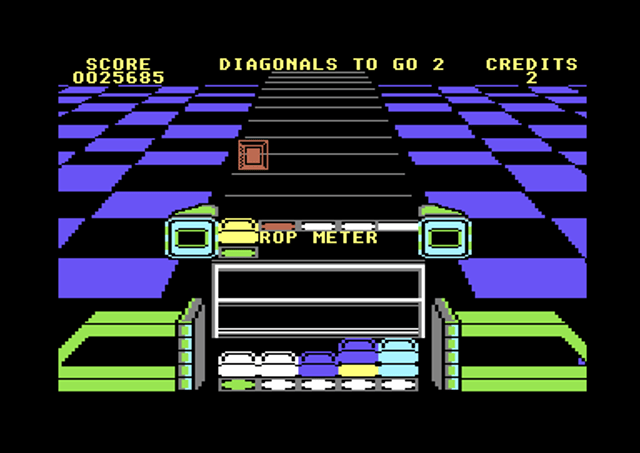
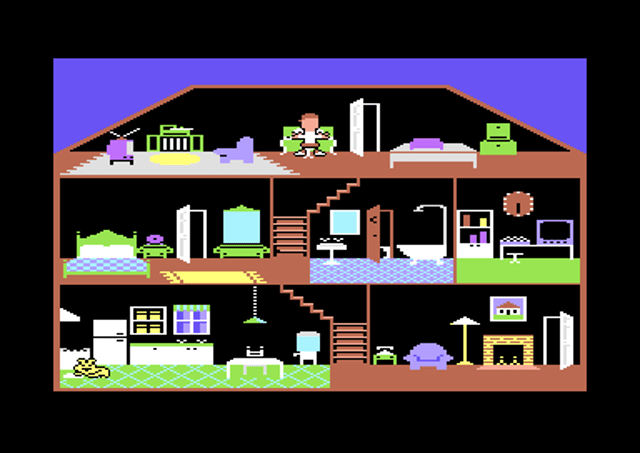
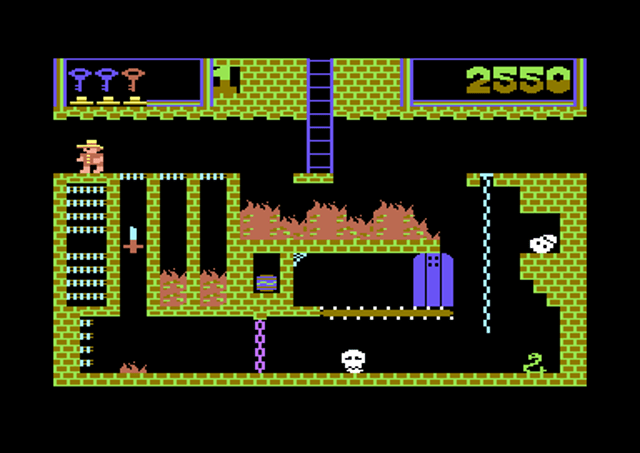

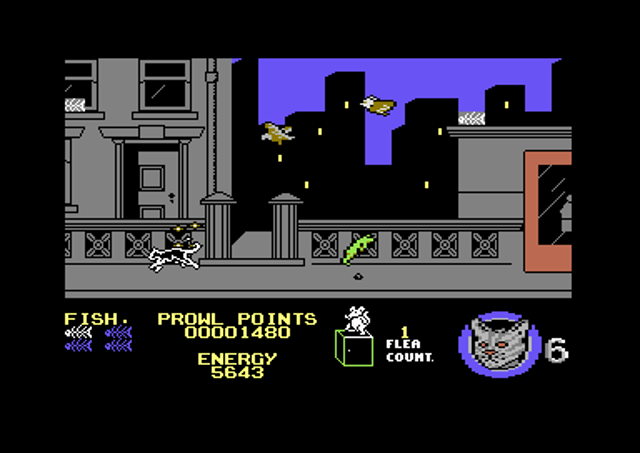
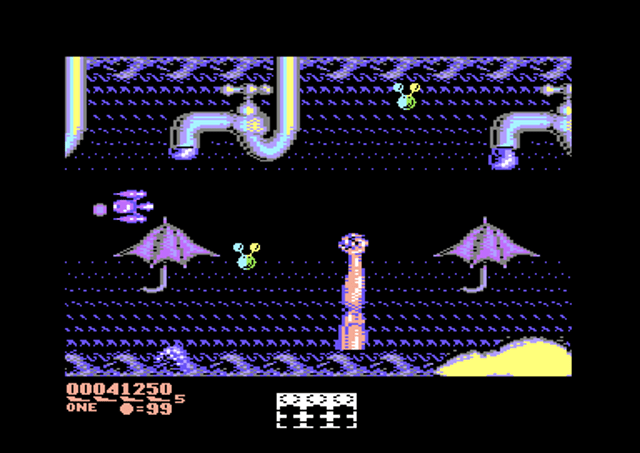
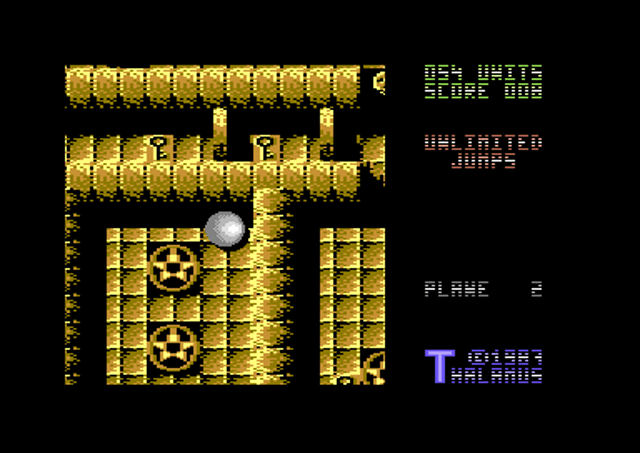
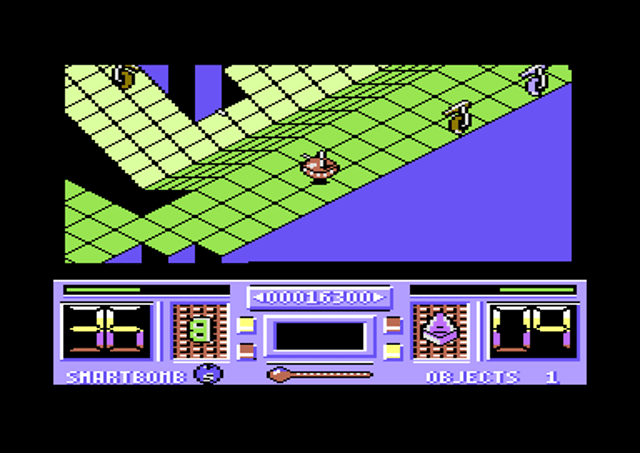
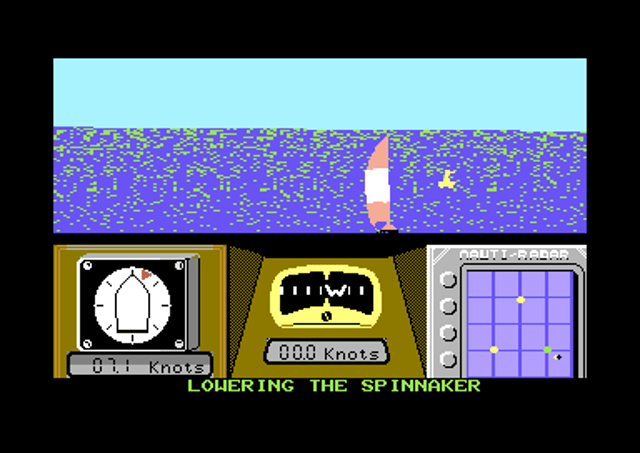
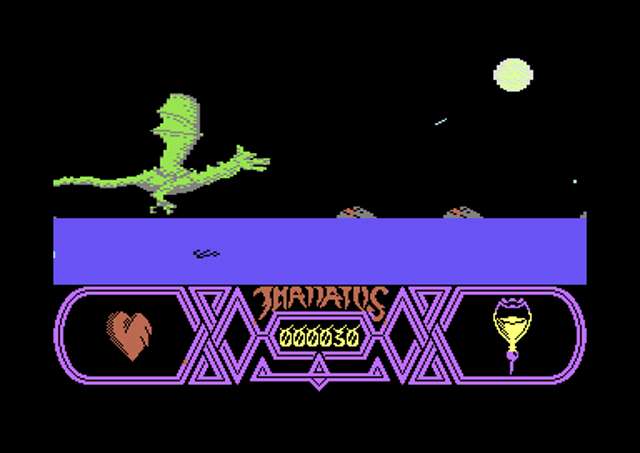
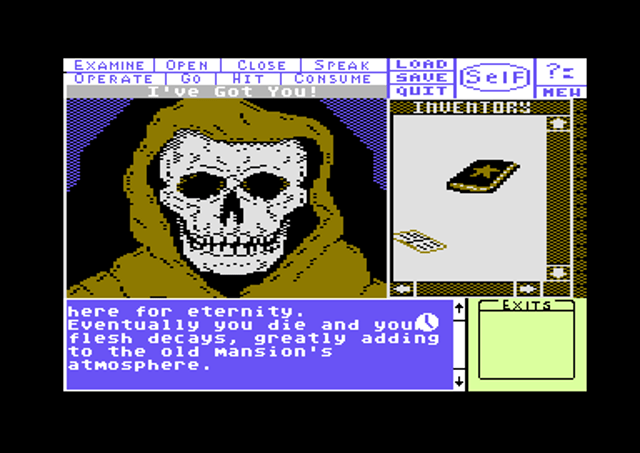
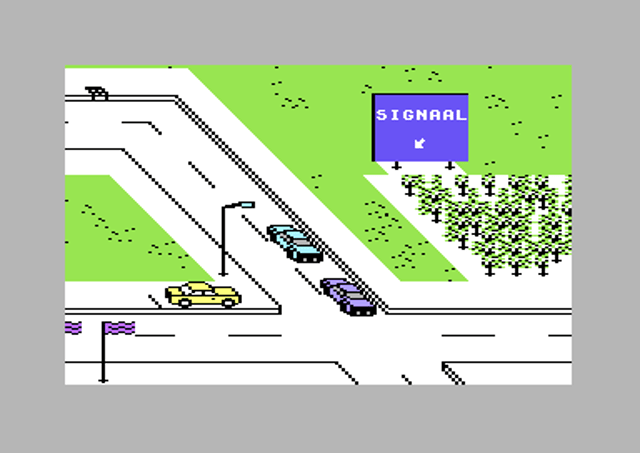

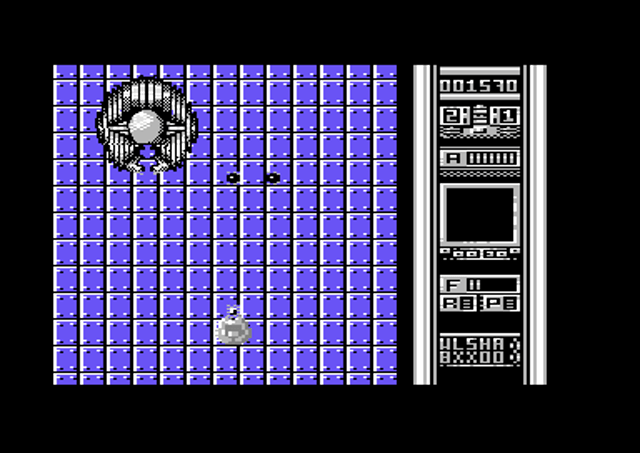
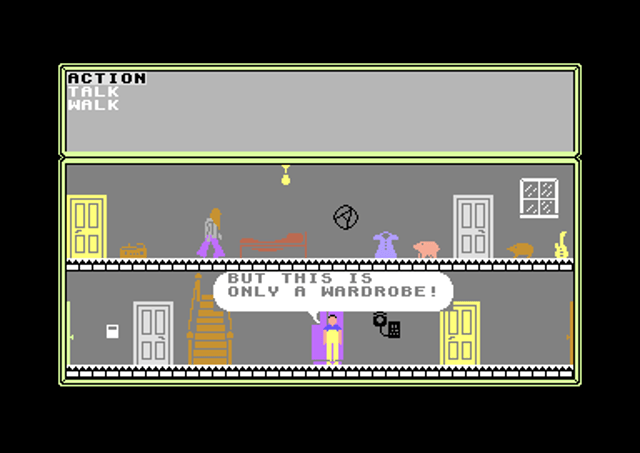
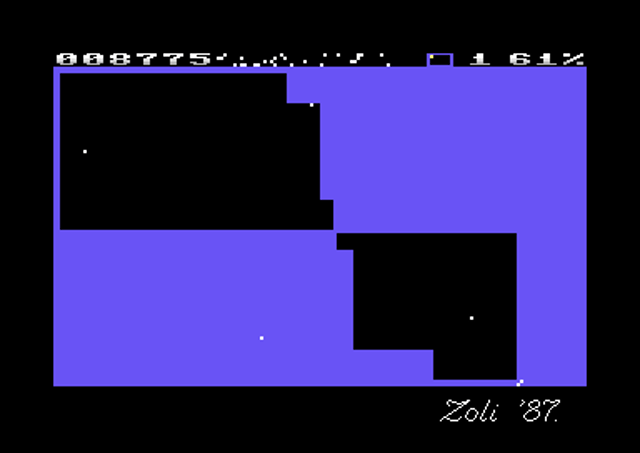
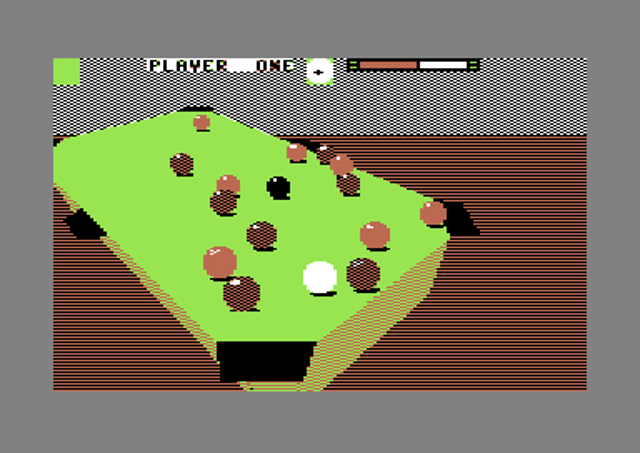
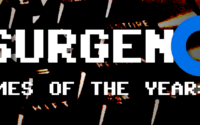
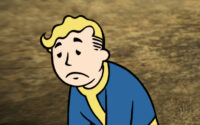
Really nice article. Stunning gfx and innovative ideas for it’s time. Haven’t seen many of this early titles before. But remember Nemesis The Warlock thanks to this!
:’D …*thumbs up* …
And you’re absolutely right – One fantastic computer would be one with the hardware from an Amiga and the SID-chip from the C64…
Take care…!